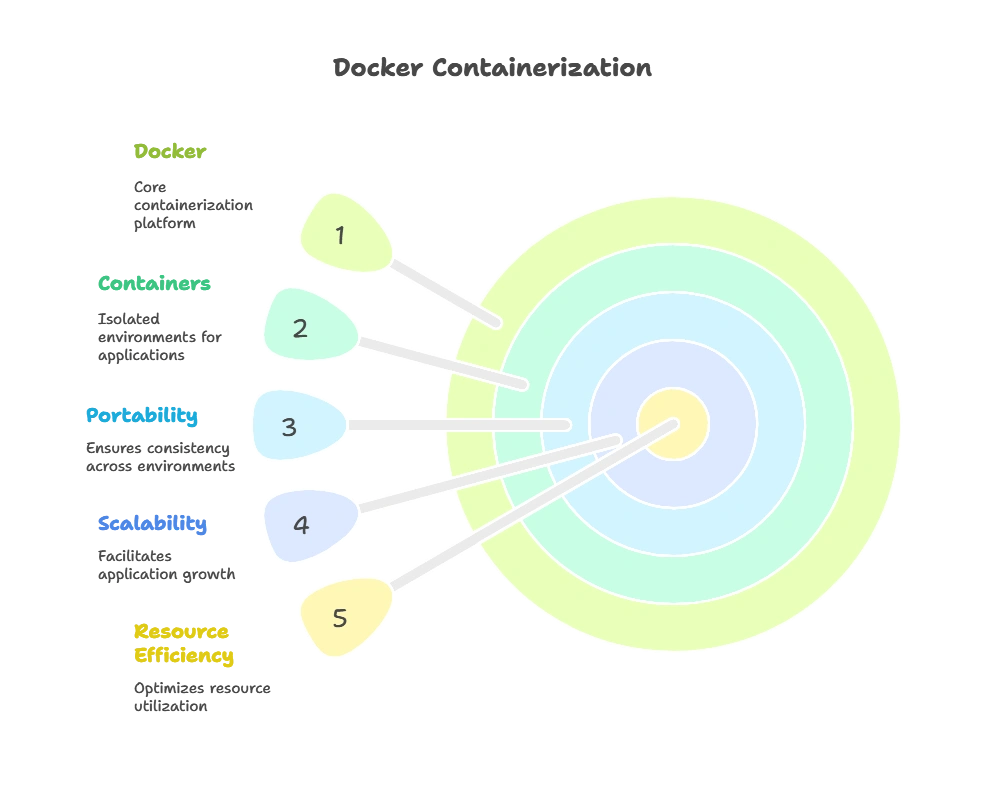Docker for Containerization
Docker has transformed the way software is developed, deployed, and managed by providing a powerful containerization platform. With Docker, developers can package their applications and dependencies into lightweight, portable containers, ensuring consistency and reliability across different environments.
Introduction to Docker
What is Docker?
Docker is a leading containerization platform that allows developers to package, distribute, and run applications in lightweight, portable containers. Containers provide a consistent and isolated environment for running applications, making it easier to deploy and manage software across different environments.
Why Docker?
Docker offers several benefits, including portability, scalability, and resource efficiency. By packaging applications and their dependencies into containers, developers can ensure consistency and reliability across different environments. Docker’s declarative configuration and automation capabilities streamline the deployment process, enabling faster delivery of software updates and improvements.

Getting Started with Docker
Installing Docker
You can install Docker by following the instructions for your operating system on the Docker website.
Running Your First Docker Container
Let’s run a simple Docker container that prints “Hello, Docker!” to the console:
docker run hello-world
Explanation:
- We use the
docker runcommand to run a Docker container. - The
hello-worldimage is automatically pulled from the Docker Hub registry and run as a container. - The container prints “Hello, Docker!” to the console, confirming that Docker is installed and running correctly.
Building Docker Images
Let’s create a Dockerfile to build a custom Docker image for a Python application:
FROM python:3.9-slim
WORKDIR /app
COPY requirements.txt .
RUN pip install -r requirements.txt
COPY . .
CMD ["python", "app.py"]
Explanation:
- We start with a base image
python:3.9-slim. - We set the working directory to
/app. - We copy the
requirements.txtfile to the working directory and install dependencies. - We copy the entire application code to the working directory.
- We specify the command to run the application (
app.py) when the container starts.
Building the Docker Image
To build the Docker image, navigate to the directory containing the Dockerfile and run:
docker build -t my-python-app .
Explanation:
- We use the
docker buildcommand to build a Docker image based on the Dockerfile in the current directory. - We specify the
-tflag to tag the image with a name (my-python-app).
Advanced Docker Usage
Docker Compose for Multi-Container Applications
Docker Compose is a tool for defining and running multi-container Docker applications. It uses a YAML file to define services, networks, and volumes, making it easy to manage complex application stacks.
Let’s create a docker-compose.yml file to define a multi-container application with Docker Compose:
version: '3.8'
services:
web:
build: .
ports:
- "8000:8000"
volumes:
- .:/app
command: ["python", "app.py"]
Explanation:
- We define a service named
webwith the current directory as the build context. - We expose port 8000 on the host and map it to port 8000 in the container.
- We mount the current directory as a volume inside the container to enable live code reloading.
- We specify the command to run the application (
app.py) when the container starts.
Docker Networking and Volumes
Docker provides networking and volume capabilities for connecting containers and persisting data between container restarts. Networking allows containers to communicate with each other, while volumes provide a way to store and share data between containers and the host.
Dockerfile Best Practices
To optimize Dockerfile performance and efficiency, follow best practices such as minimizing image size, using multi-stage builds, and caching dependencies.
In this topic, we've explored the powerful capabilities of Docker for containerization. Docker has transformed the way applications are developed, deployed, and managed by providing a lightweight and portable environment for running software.With Docker, developers can package their applications and dependencies into containers, ensuring consistency and reliability across different environments. Docker's declarative configuration and automation capabilities streamline the deployment process, enabling faster delivery of software updates and improvements. Happy coding! ❤️
